Meadowvale Conservation Area in Mississauga is not a birding hotspot,
actually, but it is certainly a pretty place for a nature walk on a day
in May. By mid-month flowering shrubs and trees are at their peak. Chokecherry (Prunus virginiana)....
...and Crab apple (Malus sylvestris) spread sprays of white blossoms to attract insect pollinators.
Less impressive are the wind-pollinated catkins of Black Willow (Salix nigra).
The best bird of our excursion was a Black-billed Cuckoo (Coccyzus erythropthalmus), a common enough migrant but one I don’t often see.
On the 17th of May we visited what is probably Mississauga’s best spot for migrating birds, the Rattray Marsh Conservation Area on the shores of Lake Ontario.
The marsh was once much larger, but it is still a place worth visiting, again for all-out nature watching as well as bird spotting.
The trick for a good nature walk is to keep your eye open for details: perhaps the flower of a Mayapple (Podophyllum peltatum), barely visible beneath its spreading parasol of leaves...
...an introduced garden snail, one of a number of species in the genus Cepaea, gliding slowly across a boardwalk...
...a clump of Field Horsetails (Equisetum arvense), a humble reminder of a group of plants whose gigantic ancestors once formed extensive forests, and whose remains form much of the world’s coal supply...
... a cluster of Marsh Marigolds (Caltha palustris), their yellow flowers gleaming from the shadows...
...a clump of Field Horsetails (Equisetum arvense), a humble reminder of a group of plants whose gigantic ancestors once formed extensive forests, and whose remains form much of the world’s coal supply...
... a cluster of Marsh Marigolds (Caltha palustris), their yellow flowers gleaming from the shadows...
Of course the birds were there too. Male Red-winged blackbirds (Agelaius phoeniceus) sang their challenges at each other from the reedbeds, each warning the others to stay out of his territory.
Other birds swim, or fly, along the shores of Lake Ontario at the foot of the marsh.
Other birds swim, or fly, along the shores of Lake Ontario at the foot of the marsh.
Pairs of Mute Swans (Cygnus olor) swam in leisurely style along the edge of the lake.
This specie, an introduction from Europe, is the "traditional" swan of art, literature and ballet.
This specie, an introduction from Europe, is the "traditional" swan of art, literature and ballet.
Ring-billed Gulls (Larus delawarensis), by far the commonest of the local gull fauna, circled overhead...
Missing were the waves of migrating wood warblers (Parulidae) that send birders into frenzies of excitement at this time of year - perhaps the weather was simply too nice, and there was nothing to keep these night-flying migrants from continuing on to their northern breeding grounds - but local breeders were certainly in attendance. I considered myself lucky to spot the nest of a Blue-grey Gnatcatcher (Polioptila caerulea), a southern bird that has become increasingly common in southern Ontario in recent years.The nest, a neat little cup of mosses and lichens held together with spider webbing, recalls the only slightly smaller nest of a hummingbird. The male and female took turns brooding. This is the female, who was in residence when we first spotted the nest.
The male, who soon replaced her, can be identified by his fine black eyebrow-mark.
The Red-eyed Vireo (Vireo olivaceus) is one of the most widespread and abundant woodland birds in North America. My Master’s thesis was on the jaw musculature of vireos, and my supervisor, the late Jon Barlow, was the world authority on the family, so I find vireos interesting birds despite their relative drabness. Thanks to the growth of DNA analyses, the vireos have become even more interesting since the late sixties, when I did my research.
Once thought of as a purely American family related to the other “nine-primaried” American songbirds, it turns out that not only are they derived from an Australian lineage distantly related to shrikes, but that some Southeast Asian birds long considered to be odd members of the babbler assemblage - the shrike-babblers (Pteruthius) and the bird formerly known as the White-bellied Yuhina (Erpornis zantholeuca) - are actually vireos in disguise. Vireos are, therefore, descendants of immigrants to North America with family connections in Southeast Asia - as I am, in fact.
The Red-eyed Vireo (Vireo olivaceus) is one of the most widespread and abundant woodland birds in North America. My Master’s thesis was on the jaw musculature of vireos, and my supervisor, the late Jon Barlow, was the world authority on the family, so I find vireos interesting birds despite their relative drabness. Thanks to the growth of DNA analyses, the vireos have become even more interesting since the late sixties, when I did my research.
Once thought of as a purely American family related to the other “nine-primaried” American songbirds, it turns out that not only are they derived from an Australian lineage distantly related to shrikes, but that some Southeast Asian birds long considered to be odd members of the babbler assemblage - the shrike-babblers (Pteruthius) and the bird formerly known as the White-bellied Yuhina (Erpornis zantholeuca) - are actually vireos in disguise. Vireos are, therefore, descendants of immigrants to North America with family connections in Southeast Asia - as I am, in fact.
Now that we have managed to exterminate the two largest woodpeckers in North America (or, indeed, the world), the Ivory-billed Woodpecker of the southeastern US (Campephilus principalis) and the Imperial Woodpecker of México (Campephilus imperialis), the Pileated Woodpecker (Dryocopus pileatus) remains the largest woodpecker we have. It is not rare, but it is spectacular. I am always excited to see one.
So far, this had been a pretty ordinary - indeed, unspectacular - May birding weekend. Now, though, I heard about a really amazing find: a Swainson's Warbler (Limnothlypis swainsonii) has been found on Toronto’s Leslie Street Spit. Excited birders were planning to converge on the spot on the 18th to search for it. Now, Swainson’s Warbler, as American wood warblers go, is a plain little creature, and you might wonder why this one should have created such a stir. There are two reasons: first, this is a skulking inhabitant of canebrakes and hardwood forest in the southeastern US that practically never shows up farther north, and second, at least as far as I was concerned, this was one of the few North American members of the family that I had never seen before, despite repeated searches for it in South Florida where it is a passage migrant. An expedition to the spit, with a rather puzzled Ryan in tow, was clearly called for.
So far, this had been a pretty ordinary - indeed, unspectacular - May birding weekend. Now, though, I heard about a really amazing find: a Swainson's Warbler (Limnothlypis swainsonii) has been found on Toronto’s Leslie Street Spit. Excited birders were planning to converge on the spot on the 18th to search for it. Now, Swainson’s Warbler, as American wood warblers go, is a plain little creature, and you might wonder why this one should have created such a stir. There are two reasons: first, this is a skulking inhabitant of canebrakes and hardwood forest in the southeastern US that practically never shows up farther north, and second, at least as far as I was concerned, this was one of the few North American members of the family that I had never seen before, despite repeated searches for it in South Florida where it is a passage migrant. An expedition to the spit, with a rather puzzled Ryan in tow, was clearly called for.
The Leslie Street Spit is an artificial structure, a long hook penetrating Lake Ontario at Toronto’s eastern end. It was originally created as a dumping ground for sand dredged from the lake bottom to improve Toronto’s harbour. Nature, however, has moved in, the spit has been colonized by stands of Trembling Aspen (Populus tremuloides) and other trees, and after a long fight with developers who wanted to use it as a marina for wealthy yacht owners it is, today, a nature sanctuary popular with hikers, picnickers and cyclists.
The Spit (or Tommy Thompson Park, to give it is official name) is best known to birders as the site of what has become the largest colony of Ring-billed Gulls in the world. Many years ago, as part of a campaign to protect the colony, I joined a hike on the Spit led by the fabled Roger Tory Peterson, inventor of the modern field guide (besides being a wonderful person and a hero of mine). I took my son Randy, then a toddler, with me. Roger’s photograph of Randy looking over the full colony appeared, to my delight, on the back cover of Bird Watcher’s Digest. Anyway, the gulls are still there in force. This one is being accompanied by an escort of Bonaparte's Gulls (Chroicocephalus philadelphia), one just coming into its black-headed breeding plumage.
Here are some more Bonaparte’s, this time on their own. Bonaparte’s Gull, by the way, is apparently not named (as you might expect) after Napoleon I but after his nephew Prince Charles Lucien Bonaparte (1803-1857), a well-known nineteenth-century ornithologist who named the American dove genus Zenaida after his wife. This explanation may seem odd, though, as the bird received its scientific name in 1815 when Lucien was still a child; however, the English name was probably coined later, after he supervised the completion of Alexander Wilson’s seminal American Ornithology in 1835.
After that remarkably pedantic aside, here is a nice photo of a Common Tern (Sterna hirundo) by way of compensation.
Besides attracting breeding Ring-billed Gulls in unprecedented numbers, the shores of the Great Lakes have also been host to increasing numbers of Double-crested Cormorants (Phalacrocorax auritus). Cormorants are loathed by local fishermen and have been the targets of controversial culling campaigns by the Ontario government. My good friend Barry Kent Mackay, a well-known wildlife artist and conservationist, has been fighting the cull for years; you can read his views on the matter here.
A more direct beneficiary of human changes to the Toronto shoreline has been the Trumpeter Swan (Cygnus buccinator), largest of the world’s swans and a species that once seemed doomed to follow the Passenger Pigeon into (Ectopistes migratorius) into extinction.
The Trumpeter, though, became the target of intense conservation and reintroduction campaigns, and is now, it seems, out of danger.
Wing-tagged birds like these are now a common sight on the Spit and elsewhere.
Much of the Spit is still fairly open country, where Killdeer (Charadrius vociferus) call from gravel pathways...
...and male Red-winged Blackbirds sing from the edge of aspen stands. We were not there, though, for such things. We had serious business in hand, and with the attending crowd of anxious birders, we plunged into the thickets at the base of the spit, searching back and forth for the elusive Swainson’s Warbler.
...and male Red-winged Blackbirds sing from the edge of aspen stands. We were not there, though, for such things. We had serious business in hand, and with the attending crowd of anxious birders, we plunged into the thickets at the base of the spit, searching back and forth for the elusive Swainson’s Warbler.
To make a long story short (you don’t want to hear about how many times we plunged in and out of the brush) we finally found it, and had a happy few minutes watching it as it hopped about - as Swainson’s Warblers typically do, apparently - in the leaf litter.
Swainson’s Warbler may be a plain bird but it is a distinctive one, not only for its sombre cinnamon plumage, without streaks, spots or wing bars, but for its odd, flat-headed profile. It is difficult to see even in its native range, and its hardwood forest and canebrake habitats have been drastically reduced. Finding it - and, indeed, getting a few photos - was the kind of high point that it would take a birder, or an ornithologist, to appreciate. As I am something of both, I was in ecstasies (I’m not so sure about Ryan, but I think he had a good time). With this little, unobtrusive creature in our sights, indeed, it was (as one of our group leaders remarked) “a great day for birding in Ontario”. Hardly on the level of the fall of Camelot, perhaps, but that’s the way we birders are.









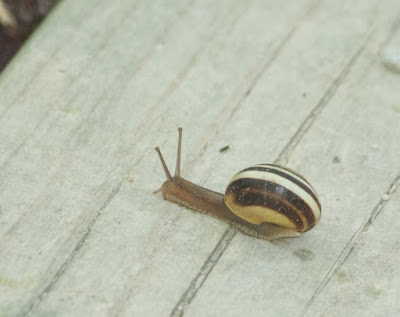



![American Toad (Bufo [Anaxyrus] americanus) American Toad (Bufo [Anaxyrus] americanus)](https://blogger.googleusercontent.com/img/b/R29vZ2xl/AVvXsEgQA-Yg_h8dseo_YrP_GMH7IAHIkRdHYVOoXo2-BgstRey7JqQqG6bdNBbe-sLyaIwQJj66nJKWjx-bHcC9RQULiEQAe07hl98MCfz6qfik50pb3iGqK0YpUPWuwEkh5GjaHR6muqgcfy6v/s400/18+-+American+Toad+%2528Bufo+%255BAnaxyrus%255D+americanus%2529+DSC_7660.jpg)














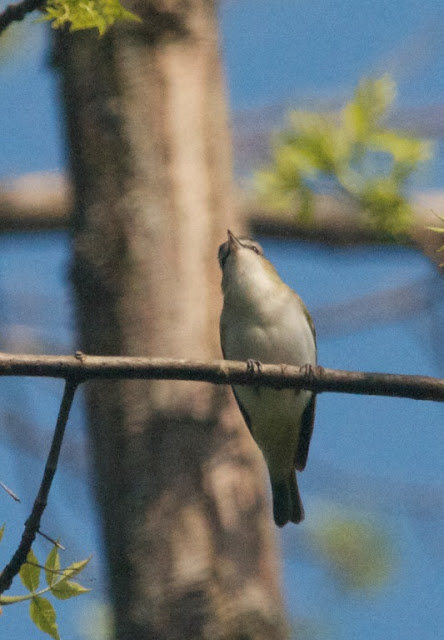
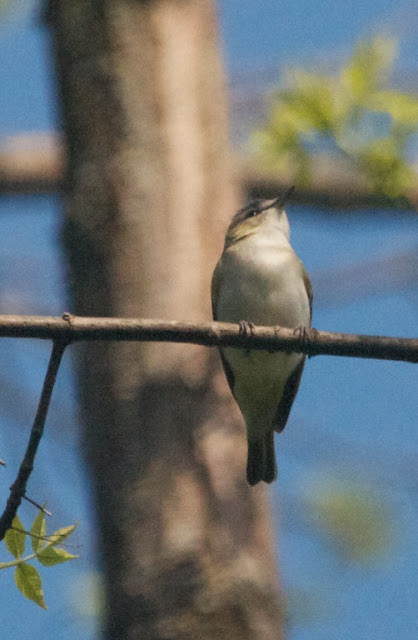
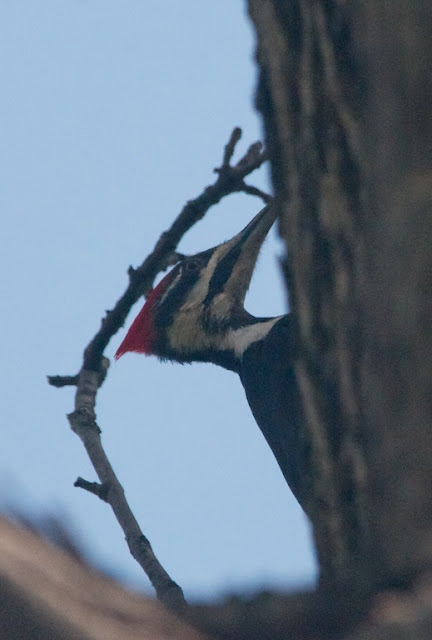




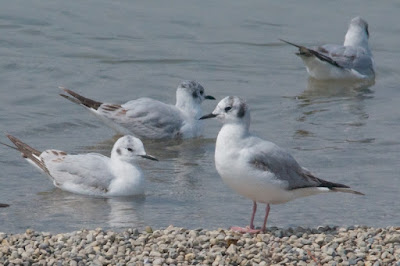















Reading this was a DELIGHT. Thank you, Ron.
ReplyDelete